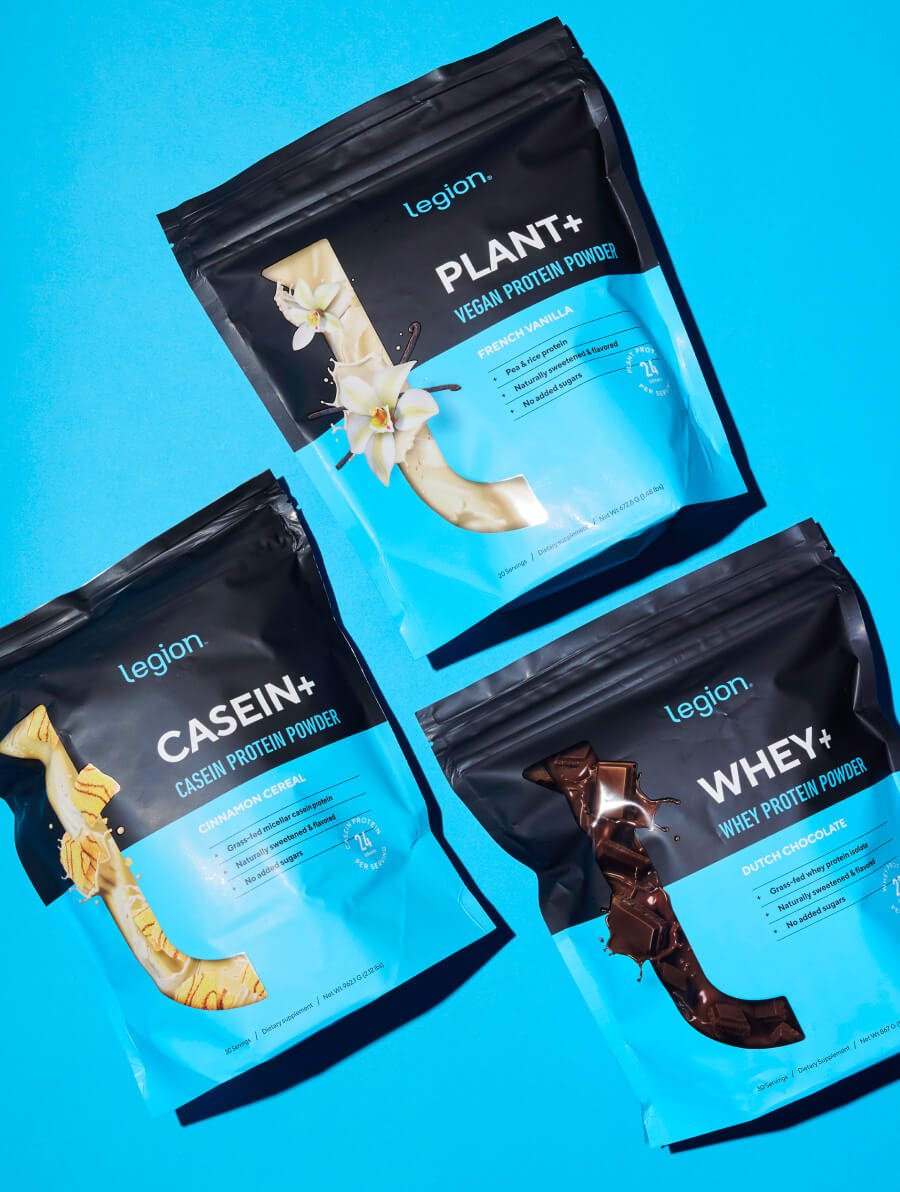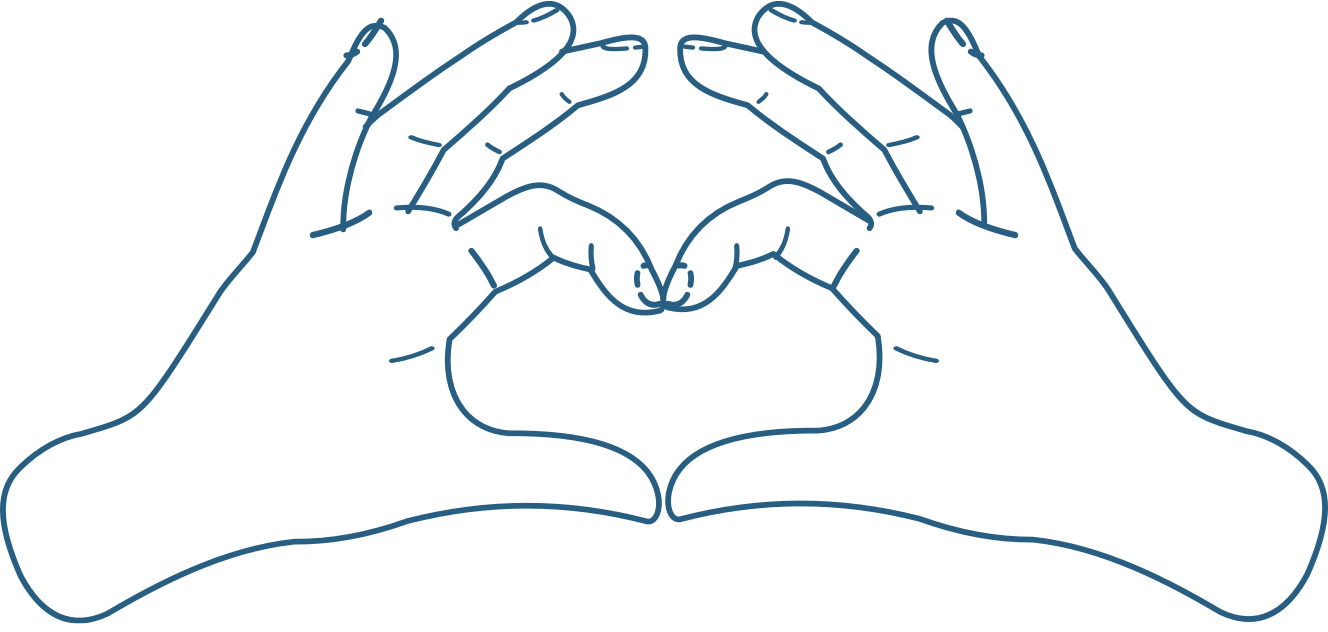Most people know that exercise is good for them.
And most also know that not exercising is bad for them.
Despite that, most people fail to meet even the bare minimum recommendations for physical activity (2.5 hours of moderate exercise or a little over an hour of intense exercise).
Just 22.9 percent of Americans hit minimum activity guidelines, not even half (46 percent) of Europeans exercise or play sports, and only 16 percent of Canadians perform the recommended levels of activity.
Then, of course, there’s a smaller group of people who go to the opposite extreme. The Ironman triathletes, gym rats, and so forth who spend every spare second in the gym or doing cardio, largely in the belief that more exercise is always better.
But, what about the rest of us?
What about people who want to be fit, healthy, and happy, who also have jobs, families, and other obligations that limit how much time we can spend working out?
And what if we don’t just want to stave off disease and dysfunction, but also build a body we’re proud of?
You’ll learn the answers to all of these questions in this article.
The long story short is you don’t need to exercise all that much to stay healthy, but building a body you can be proud of takes slightly more work. Even then, though, it doesn’t take as much time or effort as you might think.
How Much Exercise Is Enough to Be Healthy?

Seeing as how few people do any exercise, it’s no surprise that most research focuses on trying to find the minimum amount of exercise people need to stay healthy.
The “minimum effective dose,” as some call it.
For example, a study conducted by The National Health Research Institutes of Taiwan looked at the exercise habits and life expectancy of 416,175 people between 1996 and 2008.
The researchers had everyone fill out a questionnaire about their weekly exercise habits, and then categorized their habits as “inactive,” “low-volume activity,” “medium-volume activity,” “high-volume activity,” or “very high-volume activity” based on their answers.
Upon analyzing the results, the researchers found that over the 12-year study, people in the low-volume activity group—who averaged just 15 minutes of exercise per day—had a 14% reduced risk of all-cause mortality and a 3-year longer life expectancy than people who were inactive.
What’s more, every additional 15 minutes of daily exercise beyond the minimum of 15 minutes per day further reduced all-cause mortality by 4% and all-cancer mortality by 1% compared to the people who were inactive
That is, if you worked out just one hour per day, you’d have a 28% lower risk of dying than if you didn’t work out in this study.
The researchers also found that these benefits were true for people of all age groups, both sexes, and even people with a high risk of heart disease.
This result wasn’t an anomaly, either. In fact, almost every study on the effect of exercise on lifespan and health has shown that even small amounts have significant benefits.
For example, another large study conducted by scientists at Iowa State University found that running as few as 5 to 10 minutes per day, even at very slow speeds (<6 mph), was sufficient to markedly reduce the risk of death from all causes and cardiovascular disease.
Another study conducted by scientists at Jean Monnet University involving 122,417 people found that exercising just 15 minutes per day reduced all-cause mortality by 22%, and another study conducted by scientists at the National Cancer Institute found almost the exact same result when they examined data from over half a million people.
So, if your goal is just to significantly reduce your risk of dying and live longer, 15 minutes of exercise per day is a safe minimum, with more being better.
It’s also worth mentioning that the “exercise” in most of these studies was extremely easy and consisted of activities like walking, jogging, or gentle cycling—not weightlifting, HIIT, or rigorous endurance exercise. If you were to swap these easy forms of exercise with more intense forms, it’s likely you could get away with even less.
So, while it’s obvious that exercise is good for you, it’s a little less obvious why it’s good for you.
What does being physically active actually do to prolong your life?
Sure it helps you build muscle and lose fat, but that’s just the tip of the iceberg.
The benefits of increased physical activity include:
- Improved body composition
- Improved blood lipoprotein profiles (reduced triglyceride and “bad” cholesterol levels)
- Improved glucose control and insulin sensitivity
- Reduced blood pressure
- Reduced systemic inflammation
- Decreased blood coagulation
- Improved coronary blood flow
- Improved cardiac function
- Improved endothelial function
- Reduced stress and anxiety
And many other benefits.
Together, these benefits help stave off a considerable number of chronic diseases, including cancer, obesity, hypertension, bone and joint diseases, and depression.
Summary: Most research shows if you just want to reduce your risk of dying an early death, as little as 15 minutes of light exercise per day is enough to make a significant difference (with more being better). Exercise also plays a key role in staving off numerous chronic diseases.
What Happens to Your Body When You Don’t Exercise

To better understand the many benefits of exercise, it’s worth looking at what happens to your body when you don’t get enough.
It’s not pretty.
According to the World Health Organization (WHO), inactivity accounts for 6% of global deaths and is the fourth leading risk factor for mortality behind high blood glucose (just over 6%), tobacco use (9%), and high blood pressure (13%). Other conditions linked with poor diet and lack of exercise account for yet more deaths.
What’s more, the WHO estimates that inactivity is the primary cause in around 21% of breast cancer cases, 25% of colon cancer cases, 27% of diabetes cases, and 30% of coronary heart disease cases.
To avoid all of this, the WHO guidelines advise adults aged 18 to 64 to do at least 150 minutes of moderate-intensity, or at least 75 minutes of vigorous-intensity, aerobic activity throughout the week.
They also suggest doing muscle-strengthening activities involving major muscle groups two or more days a week.
Recommendations for people over 65 are much the same, though they also include mobility exercises three days per week, with the caveat that if health conditions don’t allow, people should just try to be as active as possible.
Summary: Inactivity is one of the leading causes of preventable death and disease, and the World Health Organization recommends adults should do about 150 minutes of moderate cardio or 75 minutes of intense cardio, lift weights 2 or more days per week, and do mobility exercises as time allows.
What About Weightlifting?
Countless studies have proven the health benefits of aerobic training—like walking, running, cycling, swimming, and so forth.
This may be the reason most medical professionals prescribe aerobic exercise to their patients more regularly than weightlifting.
However, research also shows aerobic exercise is not without its limitations. For example, aerobic exercise doesn’t help preserve lean body mass or resting metabolic rate as we age, whereas strength training does.
Given strength training’s ability to decrease fat mass while simultaneously increasing lean body mass, and thus increase both metabolic rate and insulin sensitivity, should we spend less time pounding the pavement on walks and runs and a little more time lifting weights?
There’s no one size fits all answer, but it’s fair to say that if you want to maximize your health, you should be doing a combination of aerobic and strength training, with an emphasis on strength training.
Aside from the body composition benefits of resistance training, lifting weights has also been shown to improve strength, cardiovascular health, bone density, the ability to prevent or manage type 2 diabetes, physical performance, sleep, walking speed, freedom of movement, cognitive abilities, and self-esteem.
What’s more, although there’s mounting evidence that greater muscle strength is associated with a decreased risk of developing impaired cognition (although it’s still unclear if it helps protect against cognitive diseases like Alzheimer’s).
Summary: Most scientific research shows that if you want to maximize your health, a significant portion of your weekly workouts should be spent strength training.
How Much Exercise Is Enough to Build a Great Body?

So far we’ve discussed the bare minimum amount of exercise you need to do to be healthy.
What if your aspirations aren’t just to avoid an early demise, though?
What if you want to build a body you can be proud of without living in the gym?
Well, when it comes to gaining size and strength as quickly as possible, nothing beats heavy compound weightlifting. That means performing exercises like the squat, deadlift, bench press and military press with weights that are between 70 to 85% of your one-rep max (1RM).
Research shows that easy, lower-intensity strength training (<60% of 1RM) isn’t nearly as effective for building muscle and gaining strength as harder, higher-intensity strength training (>60% of 1RM).
Using heavier weights also allows you to make progress despite doing shorter workouts—often no more than 45 to 60 minutes.
So, how many days should you work out per week?
Well, if you want to maximize your results while spending as little time in the gym as possible, I recommend starting with a 3-day per week workout split. You can still make some progress training just once or twice a week, but most people quickly reach a plateau after several months of this.
If you can make a little more time to spend in the gym each week, though, you’ll make even faster progress by following a 4- or 5-day per week workout split.
Check out this article to learn more about the pros and cons of higher and lower training frequencies:
The Best Training Frequency for Building Muscle (According to 20 Studies)
And check out this article if you’re interested in learning about some of the best 3-, 4-, and 5-day strength training programs you can do:
The 12 Best Science-Based Strength Training Programs for Gaining Muscle and Strength
Summary: If you want to build a body you can be proud of, you’ll need to dedicate at least two to three days per week to heavy, compound weightlifting workouts, and you’ll make faster progress by lifting weights 4 or 5 days per week.
The Bottom Line on How Much Exercise We Need to Be Healthy
Most of us want to live long, healthy lives.
Unfortunately, many people fail to accomplish a key piece of the puzzle for accomplishing this: regular exercise.
In some cases this is due to laziness, in other cases it’s simply an issue of misplaced priorities, and in others it’s because people have incorrect information.
They think they need to run marathons and spend their nights and weekends in the gym to be healthy, but research shows this is far from the truth.
You can get big benefits from small amounts of daily activity—even just 15 minutes per day—though the more you’re willing to do the more results you’ll get.
Many people assume that aerobic exercise is the best form of exercise for staying healthy, but weightlifting offers many benefits you can’t get from cardio alone, and it’s worth trying to hit the gym at least once or twice per week to maximize your health.
The requirements are a bit higher when it comes to building a body you can be proud of. In this case, you’ll need to do at least 2 to 3 weightlifting workouts per week to see significant gains, and you’ll make faster progress by lifting weights at least 4 or 5 times per week.
What do you think of how much exercise we need to do to be healthy? Have anything else to add? Lemme know in the comments below!
Scientific References +
- Schoenfeld BJ, Peterson MD, Ogborn D, Contreras B, Sonmez GT. Effects of low- vs. High-load resistance training on muscle strength and hypertrophy in well-trained men. J Strength Cond Res. 2015;29(10):2954-2963. doi:10.1519/JSC.0000000000000958
- Boyle PA, Buchman AS, Wilson RS, Leurgans SE, Bennett DA. Association of muscle strength with the risk of Alzheimer disease and the rate of cognitive decline in community-dwelling older persons. Arch Neurol. 2009;66(11):1339-1344. doi:10.1001/archneurol.2009.240
- Hurley BF, Hanson ED, Sheaff AK. Strength training as a countermeasure to aging muscle and chronic disease. Sport Med. 2011;41(4):289-306. doi:10.2165/11585920-000000000-00000
- Annesi JJ, Westcott WW, Gann S. Preliminary evaluation of a 10-wk. Resistance and Cardiovascular exercise protocol on physiological and psychological measures for a sample of older women. Percept Mot Skills. 2004;98(1):163-170. doi:10.2466/pms.98.1.163-170
- Liu-Ambrose T, Donaldson MG. Exercise and cognition in older adults: Is there a role for resistance training programmes? Br J Sports Med. 2009;43(1):25-27. doi:10.1136/bjsm.2008.055616
- Rantanen T, Avela J. Leg extension power and walking speed in very old people living independently. J Gerontol A Biol Sci Med Sci. 1997;52(4):M225-31. doi:10.1093/gerona/52a.4.m225
- Singh NA, Stavrinos TM, Scarbek Y, Galambos G, Liber C, Singh MAF. A randomized controlled trial of high versus low intensity weight training versus general practitioner care for clinical depression in older adults. Journals Gerontol - Ser A Biol Sci Med Sci. 2005;60(6):768-776. doi:10.1093/gerona/60.6.768
- Christou M, Smilios I, Sotiropoulos K, Volaklis K, Pilianidis T, Tokmakidis SP. Effects of resistance training on the physical capacities of adolescent soccer players. J Strength Cond Res. 2006;20(4):783-791. doi:10.1519/R-17254.1
- Phillips SM. Resistance exercise: Good for more than just Grandma and Grandpa’s muscles. Appl Physiol Nutr Metab. 2007;32(6):1198-1205. doi:10.1139/H07-129
- Shaw I, Shaw BS, Brown GA, Cilliers JF. Concurrent resistance and aerobic training as protection against heart disease. Cardiovasc J Afr. 21(4):196-199. http://www.ncbi.nlm.nih.gov/pubmed/20838717. Accessed January 27, 2020.
- Peig-Chiello P, Perrig WJ, Ehrsam R, Staehelin HB, Krings F. The effects of resistance training on well-being and memory in elderly volunteers. Age Ageing. 1998;27(4):469-475. doi:10.1093/ageing/27.4.469
- Bweir S, Al-Jarrah M, Almalty A-M, et al. Resistance exercise training lowers HbA1c more than aerobic training in adults with type 2 diabetes. Diabetol Metab Syndr. 2009;1(1):27. doi:10.1186/1758-5996-1-27
- Westcott WL. Resistance training is medicine: Effects of strength training on health. Curr Sports Med Rep. 2012;11(4):209-216. doi:10.1249/JSR.0b013e31825dabb8
- Shaw BS, Shaw I, Mamen A. Contrasting effects in anthropometric measures of total fatness and abdominal fat mass following endurance and concurrent endurance and resistance training. J Sports Med Phys Fitness. 2010;50(2):207-213. https://www.ncbi.nlm.nih.gov/pubmed/20585300. Accessed January 27, 2020.
- Hunter GR, McCarthy JP, Bamman MM. Effects of resistance training on older adults. Sport Med. 2004;34(5):329-348. doi:10.2165/00007256-200434050-00005
- Westcott WL, Winett RA, Annesi JJ, Wojcik JR, Anderson ES, Madden PJ. Prescribing physical activity: Applying the ACSM protocols for exercise type, intensity, and duration across 3 training frequencies. Phys Sportsmed. 2009;37(2):51-58. doi:10.3810/psm.2009.06.1709
- Zhao G, Li C, Ford ES, et al. Leisure-time aerobic physical activity, muscle-strengthening activity and mortality risks among US adults: The NHANES linked mortality study. Br J Sports Med. 2014;48(3):244-249. doi:10.1136/bjsports-2013-092731
- World Health Organization. Physical Activity: Global recommendations on physical activity for health Consequences of physical inactivity. WHO Reg Off Eur. 2015. doi:ISBN 978 92 4 159 997 9
- Brown JP, Josse RG. 2002 Clinical practice guidelines for the diagnosis and management of osteoporosis in Canada. CMAJ. 2002;167(10). https://www.ncbi.nlm.nih.gov/pubmed/12427685. Accessed January 27, 2020.
- Kerr D, Morton A, Dick I, Prince R. Exercise effects on bone mass in postmenopausal women are site-specific and load-dependent. J Bone Miner Res. 2009;11(2):218-225. doi:10.1002/jbmr.5650110211
- Paffenbarger RS, Jung DL, Leung RW, Hyde RT. Physical activity and hypertension: An epidemiological view. Ann Med. 1991;23(3):319-327. doi:10.3109/07853899109148067
- Katzmarzyk PT, Church TS, Janssen I, Ross R, Blair SN. Metabolic syndrome, obesity, and mortality: Impact of cardiorespiratory fitness. Diabetes Care. 2005;28(2):391-397. doi:10.2337/diacare.28.2.391
- Westerlind KC. Physical Activity and Cancer Prevention - Mechanisms. In: Medicine and Science in Sports and Exercise. Vol 35. ; 2003:1834-1840. doi:10.1249/01.MSS.0000093619.37805.B7
- Dunn AL, Trivedi MH, O’Neal HA. Physical activity dose-response effects on outcomes of depression and anxiety. In: Medicine and Science in Sports and Exercise. Vol 33. ; 2001. doi:10.1097/00005768-200106001-00027
- Kobayashi N, Tsuruya Y, Iwasawa T, et al. Exercise training in patients with chronic heart failure improves endothelial function predominantly in the trained extremities. Circ J. 2003;67(6):505-510. doi:10.1253/circj.67.505
- Warburton DER, Gledhill N, Jamnik VK, Krip B, Card N. Induced hypervolemia, cardiac function, V̇O(2max), and performance of elite cyclists. Med Sci Sports Exerc. 1999;31(6):800-808. doi:10.1097/00005768-199906000-00007
- Hambrecht R, Wolf A, Gielen S, et al. Effect of exercise on coronary endothelial function in patients with coronary artery disease. N Engl J Med. 2000;342(7):454-460. doi:10.1056/NEJM200002173420702
- Rauramaa R, Salonen JT, Seppänen K, et al. Inhibition of platelet aggregability by moderate-intensity physical exercise: a randomized clinical trial in overweight men. Circulation. 1986;74(5):939-944. doi:10.1161/01.cir.74.5.939
- Adamopoulos S, Parissis J, Kroupis C, et al. Physical training reduces peripheral markers of inflammation in patients with chronic heart failure. Eur Heart J. 2001;22(9):791-797. doi:10.1053/euhj.2000.2285
- Blair SN, Goodyear NN, Gibbons LW, Cooper KH. Physical Fitness and Incidence of Hypertension in Healthy Normotensive Men and Women. JAMA J Am Med Assoc. 1984;252(4):487-490. doi:10.1001/jama.1984.03350040017014
- Kelley DE, Goodpaster BH. Effects of physical activity on insulin action and glucose tolerance in obesity. Med Sci Sports Exerc. 1999;31(11 SUPPL.). doi:10.1097/00005768-199911001-00021
- Wallberg-Henriksson H, Rincon J, Zierath JR. Exercise in the management of non-insulin-dependent diabetes mellitus. Sport Med. 1998;25(1):25-35. doi:10.2165/00007256-199825010-00003
- Brenes G, Dearwater S, Shapera R, LaPorte RE, Collins E. High density lipoprotein cholesterol concentrations in physically active and sedentary spinal cord injured patients. Arch Phys Med Rehabil. 1986;67(7):445-450. doi:10.5555/uri:pii:000399938690256X
- O’connor GT, Hennekens CH, Willett WC, et al. Physical exercise and reduced risk of nonfatal myocardial infarction. Am J Epidemiol. 1995;142(11):1147-1156. doi:10.1093/oxfordjournals.aje.a117573
- Tremblay A, Despres JP, Leblanc C, et al. Effect of intensity of physical activity on body fatness and fat distribution. Am J Clin Nutr. 1990;51(2):153-157. doi:10.1093/ajcn/51.2.153
- Warburton DER, Gledhill N, Quinney A. The effects of changes in musculoskeletal fitness on health. Can J Appl Physiol. 2001;26(2):161-216. doi:10.1139/h01-012
- Warburton DER, Gledhill N, Quinney A. Musculoskeletal fitness and health. Can J Appl Physiol. 2001;26(2):217-237. doi:10.1139/h01-013
- Arem H, Moore SC, Patel A, et al. Leisure time physical activity and mortality: A detailed pooled analysis of the dose-response relationship. JAMA Intern Med. 2015;175(6):959-967. doi:10.1001/jamainternmed.2015.0533
- Hupin D, Roche F, Gremeaux V, et al. Even a low-dose of moderate-to-vigorous physical activity reduces mortality by 22% in adults aged ≥60 years: A systematic review and meta-analysis. Br J Sports Med. 2015;49(19):1262-1267. doi:10.1136/bjsports-2014-094306
- Lee DC, Pate RR, Lavie CJ, Sui X, Church TS, Blair SN. Leisure-time running reduces all-cause and cardiovascular mortality risk. J Am Coll Cardiol. 2014;64(5):472-481. doi:10.1016/j.jacc.2014.04.058
- Wen CP, Wai JPM, Tsai MK, et al. Minimum amount of physical activity for reduced mortality and extended life expectancy: A prospective cohort study. Lancet. 2011;378(9798):1244-1253. doi:10.1016/S0140-6736(11)60749-6










